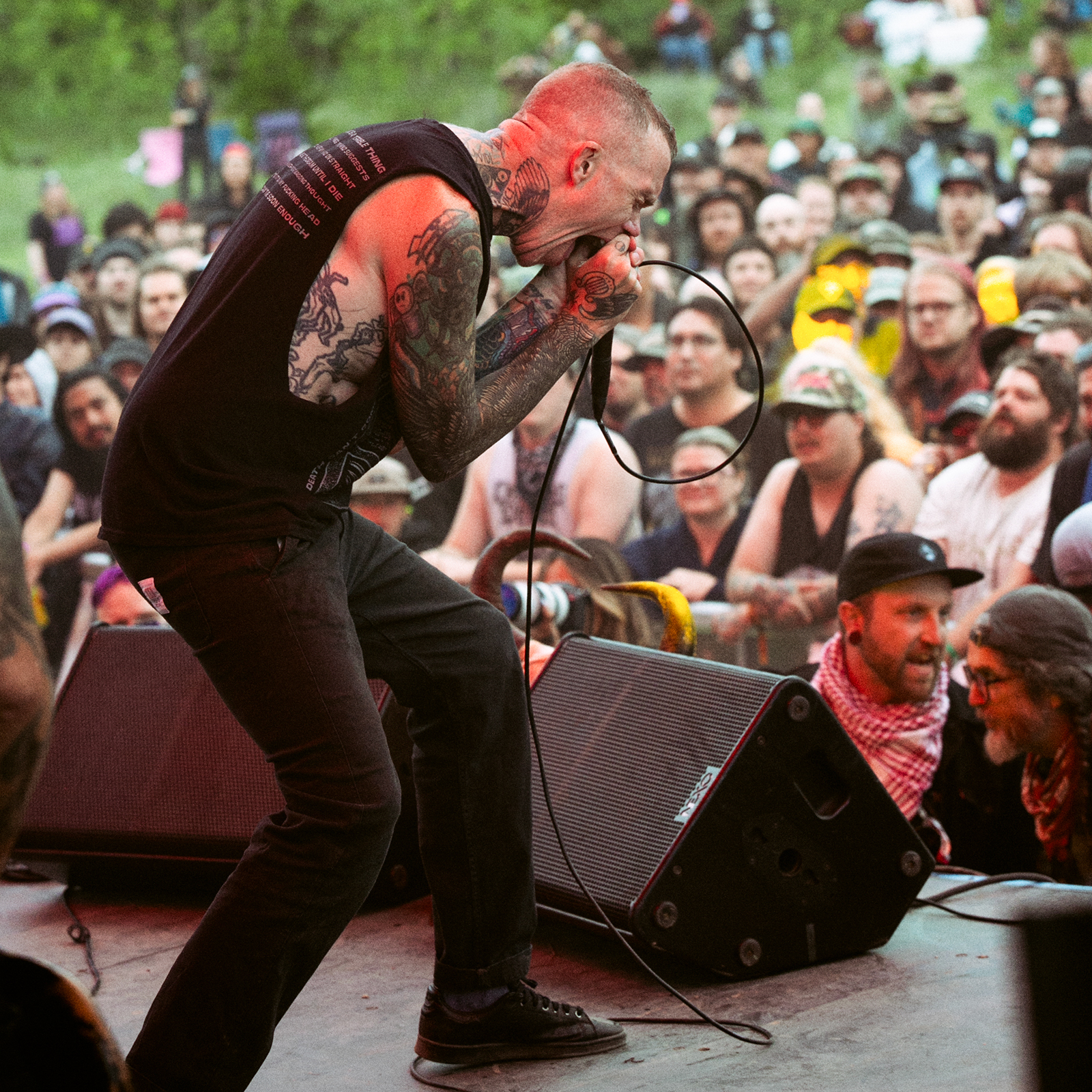A junior at Browning High School, Reb Pollock has had an experience unlike most other high schoolers — or adults for that matter. She’s designed t-shirts for two of her music idols, the world-renowned Old Norse-rooted Wardruna and the Norwegian black-metal Old Man’s Child.
This past summer, she met the lead singers, Einar Selvik and Lindy-Fay Hella from Wardruna and Galder from Old Man’s Child, when they performed during Fire in the Mountains, a music festival where she kept running into her heavy metal heroes with such a frequency it almost seemed casual.
“I found it pretty nice,” she said.
Pollock and other students enrolled in a Heavy Music Symposium had long awaited the July festival. Accredited coursework had included learning about the history of heavy music, a mixture of subgenres including metal, hardcore, punk and others. Impassioned teachers had encouraged emotional expression through music and other fringe art, teaching acceptance.
When Pollock’s teacher, Colin Sibbernsen, first told her about the course, she immediately expressed interest. Pollock’s parents had played Slipknot for her and her brother early on, and she recalls the genre and its lyrics clicking for her around sixth grade. Having grown up judged by an earlier generation of peers for their own fringe music passions, her parents immediately supported their daughter taking on the course credits.
Pollock says that, for her, it’s all about the cathartic release.
“It’s about the emotion people put into their music and also in art,” Pollock said. “Everyone puts their emotion into it. That’s why they can just let it all out.”
That release is what prompted The Firekeeper Alliance, a nonprofit addressing suicide in Indian Country with coping mechanisms like creative expression, to form the class. The nonprofit and class founder, Charlie Speicher, reached out to the FITM festival founders to see if they’d be interested in partnering, and the two organizations joined forces.
Together, they united around a single mission — “to keep the sacred flame of life alive.”
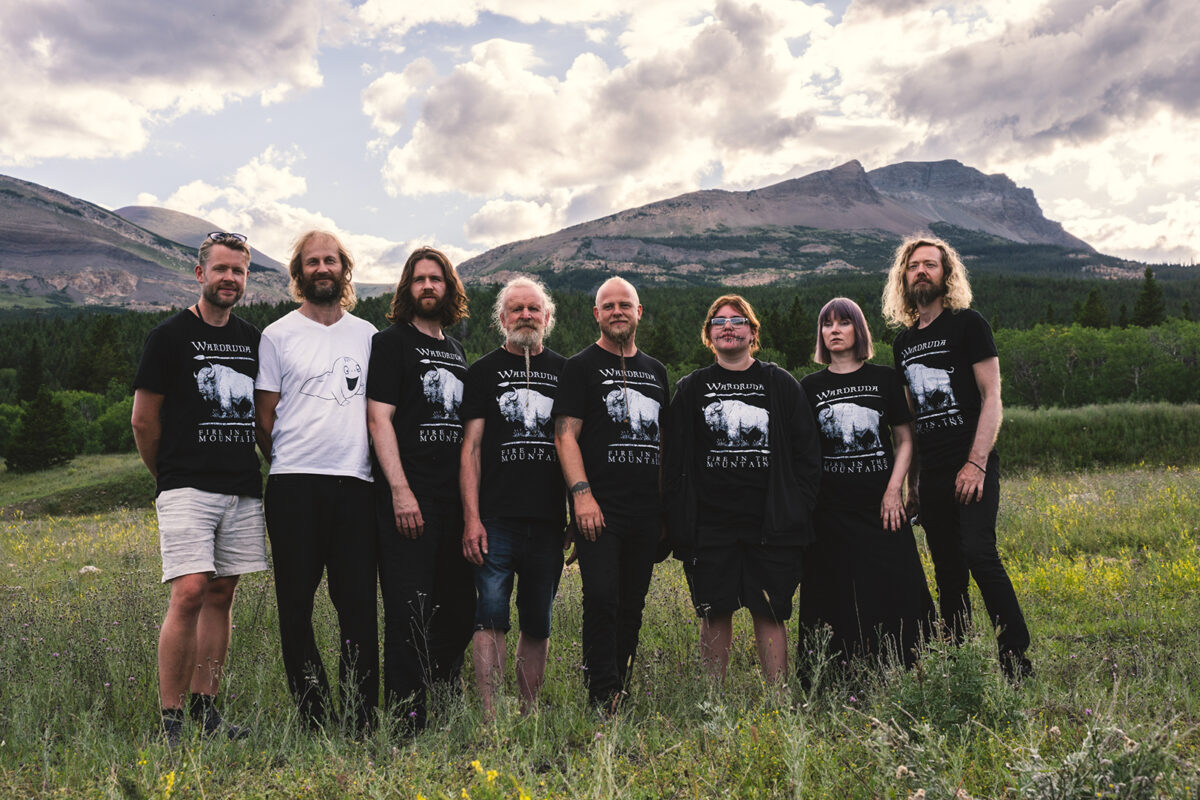
Working as a counselor in the Browning Public Schools (BPS) system over the past 20 years has been the joy of Charlie Speicher’s life. Hand in hand with the role’s deep purpose and meaning, however, are the challenges inherent to mental health work.
“It’s also very challenging and a role that is extremely difficult, especially when we lose people, young people,” Speicher said. “Over the years, I’ve been just very close to a lot of death and a lot of early loss.”
Suicide has surpassed car accidents as the number one cause of injury-related death in the United States, according to the Centers for Disease Control. Montana has the highest amount of suicide in the nation, and the highest rate is among Native Americans at 43 per 100,000 people, compared to the nationwide average of 14 per 100,000.
That’s despite Native Americans only making up 6% of the state’s population.
Youth numbers in the state also triple the national rate for those ages 11 to 17, according to data from the National Center for Health Statistics.
Cinnamon Salway, the prevention coordinator for BPS and a board member for The Firekeeper Alliance, has collected data over the past six years for the statewide Youth Risk Behavior Survey. The first time the results came back, there were 35 students in her school system that had experienced suicidal thoughts. Two years later, the number rose by 10. Last year, Salway said 65% of students reported that they had considered suicide.
“This is really scary for 65% of our students to have that thought,” Salway said. “How many are actually trying, have been hospitalized for it, the number is not really known.”
The cumulative effect of such widespread grief manifests in waves that take a toll on everyone in the community, Speicher said.
He and his wife, Sienna Speicher, who is also a school counselor and a licensed clinical professional, have dedicated their lives to working with that type of loss.
“I don’t think there’s anything else that’s more important that we could be doing in a counseling capacity,” Charlie Speicher said.
So, The Firekeeper Alliance was born.
Charlie Speicher reached out to Salway and Sibbernsen, along with other fellow clinicians, educators, a musician, a Blackfoot language expert, and a lawyer. All immediately supported the mission, creating a seven-member board of directors.
They chose the name “Firekeeper” from the traditional role of the firekeeper in Indigenous communities, whose job during ceremonies is to make sure the fire continues to burn, no matter what.
With a goal to create access to sustainable mental health resources and support in Native American communities across the state, the nonprofit focuses on reframing counseling to focus on creative outlets while integrating Indigenous values.
Approaching counseling with an Indigenous perspective begins with normalizing suicidality and destigmatizing mental health issues in Indian Country. Counselors highlight Indigenous values like reciprocity and incorporate healing practices such as sweat lodges, fasting, and other traditional medicines.
Strengths-based counseling also flips a narrative often used in Western counseling, Charlie Speicher said.
“A way to encapsulate a strengths-based approach is, instead of asking ‘what’s wrong with you?’ it’s ‘what’s strong with you?’” he said.
Creative expression and the release that comes with it — which heavy music personifies — is a key element of the nonprofit.
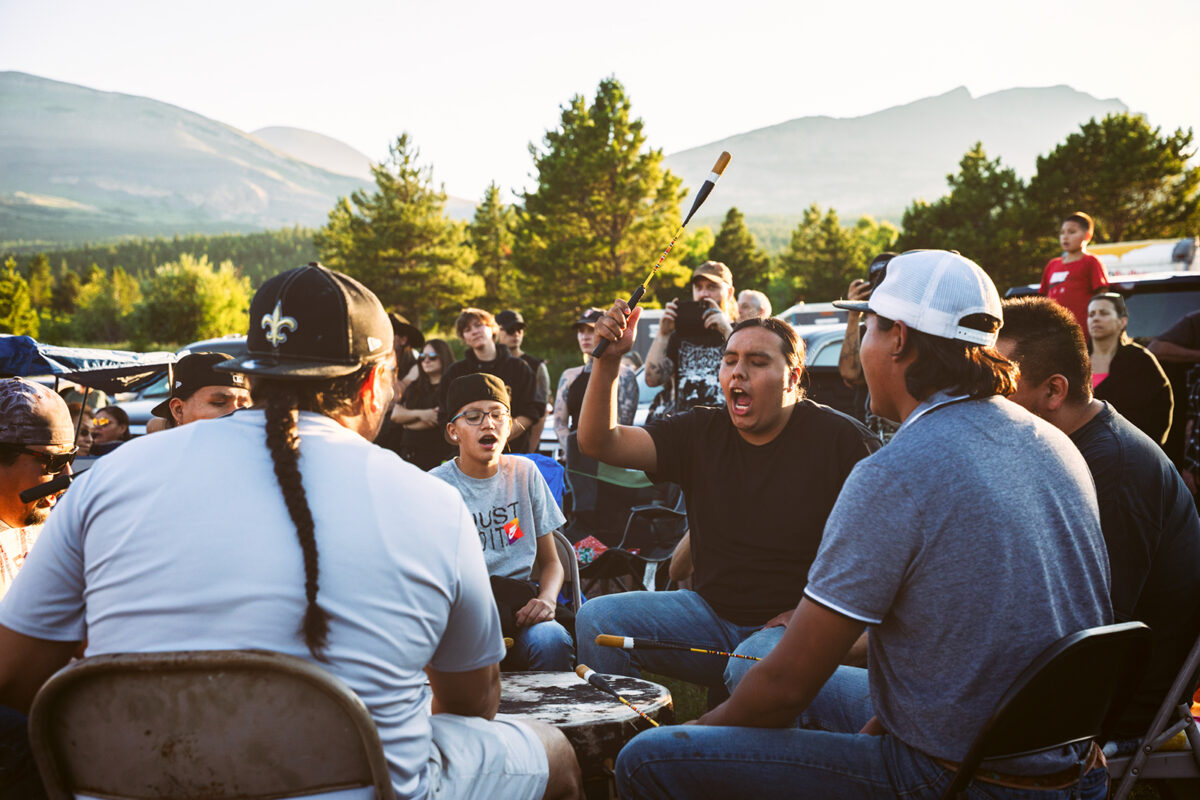
In the Blackfoot language, the word for doctor, “āassō’kinǎkii,” can also translate to “singing heavy songs.”
“Darkness prevails on Indian Country. It’s something we can’t escape,” said Robert Hall, Native American Studies director and Blackfoot language instructor at BPS.
“We don’t hide our pain and trauma,” Hall continued. “In a way, heavy metal is like that. Heavy metal faces the darkness; it’s like this acceptance of the pain that there’s darkness there. That darkness will not go away, but you can manage to make it so that the darkness doesn’t control you.”
When Charlie Speicher approached Hall, asking if he would like to be on the nonprofit’s board and be a part of its first major project, the Heavy Music Symposium, Hall agreed without hesitation.
“Man, that just sounds correct,” he said.
Collaborative efforts between Buffalo Hide Academy, Browning High School, and the BPS Blackfeet Native American Studies Department bring students from both schools to Buffalo Hide each week, where they study the spectrum of heavy music. It’s the first time the alternative school and high school have collaborated on a class together, a feat in and of itself, Hall said.
Through collaboration with festival organizers and Firekeeper Alliance board member and musician Steve Von Till, artists from renowned bands in the heavy metal world showed up to class — Nate Newton from metalcore group Converge, Mike Scheidt from doom metal outfit YOB, Ivar Bjørnson from extreme-metal band Enslaved, and others. Many shared their experience via video calls, while others found time for in-person appearances, sitting down and jamming with students.
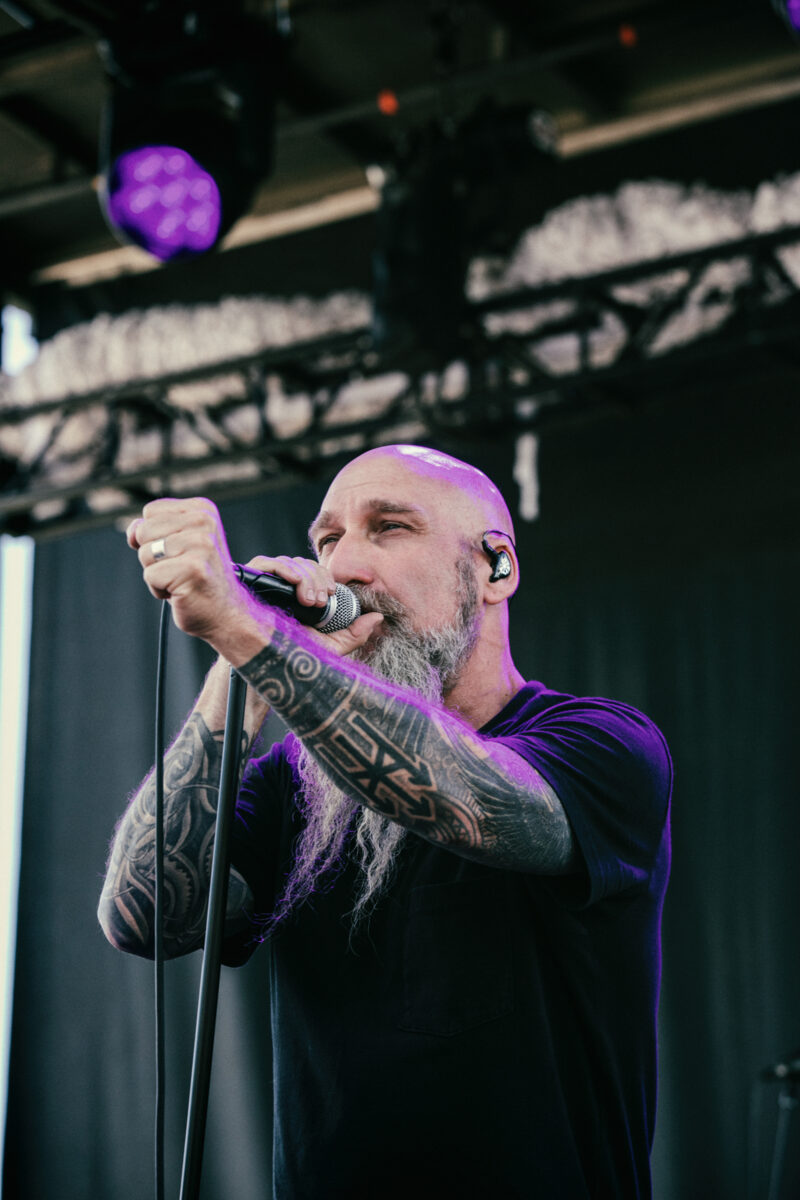
“I think by folks like myself, having conversations with them, they can see that it is doable,” said Von Till, who sang and played guitar for Neurosis, a band from Oakland that pioneered the subgenres of post- and sludge metal. He now sings under his own name and writes poetry, with a daytime job as an elementary school teacher in Idaho.
“You don’t have to want to make any money or anything like that,” Von Till said. “You just have to do it for the self-expression in a way that makes you feel good.”
Hall integrated Blackfeet cultural practices into the class, including traditional drumming, singing and ceremonies. Students also create various kinds of artwork, write in guided exercises, play instruments, or scream — sounds that Salway, the BPS prevention coordinator, hears often.
“There was a business that donated all of these guitars, and some of the students have never even held a guitar, but yet they were sitting there, wanting to learn,” Salway said. “Whenever we have a student that is feeling down or anything, they pick that up or they go and sit at the drum, or they get to scream at the mic — and all of this stuff is literally outside my door.”
Charlie Speicher and Sibbernsen first reached out to students with telltale signs of metal at their respective schools to join the class — those who wore metal band t-shirts and dark clothing, walking in the hallways with their hoodies up and earbuds in.
“This is actually a dream come true,” Paul Medicine Horse said when Sibbernsen tapped him for the class.
A junior now at Buffalo Hide Academy and a self-identified metal head, Medicine Horse said he selects different subgenres depending on what he’s feeling, pairing his mood with grind core when he’s dealing with feelings from an argument, or tuning into dreamier heavy music when he’s going to sleep.
“I don’t care what other people say, I just like how it helps me sort out different feelings,” Medicine Horse said.
After the class got going, the teachers soon found students were sneaking out of other classes to attend the symposium. At one point after seeing some fellow students slide in, Medicine Horse and other classmates told the stowaways that if they were going to be there, they needed to participate.
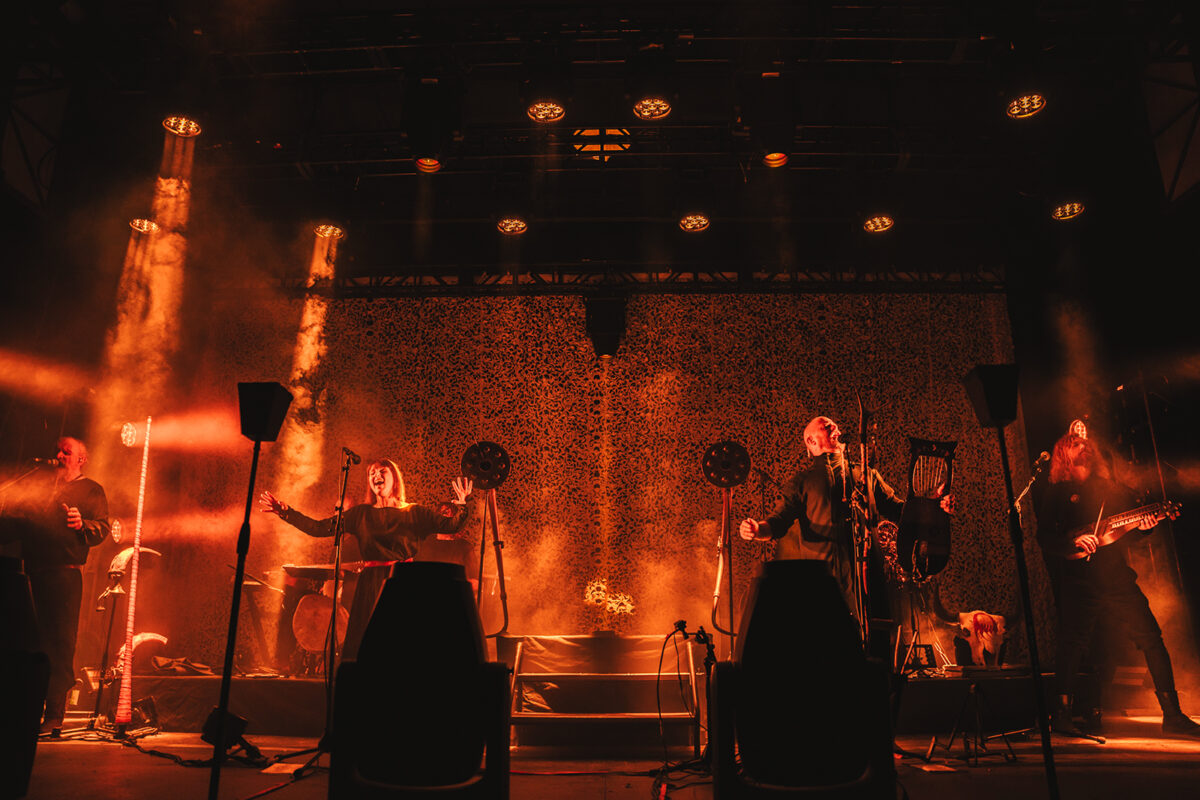
Looking over the fields and forests abutting Lower Two Medicine Lake with a backdrop of Glacier National Park peaks that make up Red Eagle Campground, heavy music festival co-founder Jeremy Walker’s jaw hit the ground.
“I said this is it,” he recalled. “This is where Fire in the Mountains needs to be — in a really beautiful spot, awe-inspiring, that will create the reverence for nature to just really respect it.”
Walker had been on a hunt for new festival grounds since the event was ousted from its former venue at a guest ranch just outside of Grand Teton National Park in Wyoming. In a stroke of serendipitous timing, he received an email from Charlie Speicher inviting him to check out the campground on the Blackfeet Reservation.
“Going there for the first time, there was no question in my mind where it was going to move — as long as we were welcomed,” Walker said.
Charlie Speicher began connecting Walker with members of the tribal community. They began talking about what it would be like to have a heavy music festival on the Blackfeet Nation, which would need approval from the Blackfeet Tribal Business Council.
While council members immediately supported the broader mission to address suicide in Indian Country, the heavy metal music festival component took some convincing, according to Everett Armstrong, a tribal council member.
“I was a little wary, but I know the work ethic and heart of Charlie and the Buffalo Hide Academy staff,” Armstrong said. “It was for our local youth suffering with ideations of suicide, and we want to expand their mind a little bit more on how heavy metal can help them cope with certain feelings they’re unfamiliar with. I just thought, ‘I think this would be great for the community.’”
Hosting a music festival also stood to benefit the local economy by more people spending money in Browning and community members getting hired to work at the festival. Local vendors would have a wider audience to market to — all told, 34 local vendors would eventually be contracted, selling out of their art, clothes, photography and food faster than they could make it.
The Tribal Council approved hosting the festival on tribal land, with a condition — no alcohol would be served at the four-day event, due to the negative and complex history it has in Native communities.
Walker agreed.
“This festival that I created 10 years ago in the wealthiest county in the U.S. is now basically the main fundraising event of the year for The Firekeeper Alliance,” Walker said of the transition from Teton County to Browning. “Man, that is fulfilling as shit for me.”

Tribal members welcomed festival attendees to Red Eagle Campground on Thursday, July 23, with a powwow featuring Young Gray Horse and other drumming groups. A few local performers followed, becoming the first to occupy the Fire in the Mountains stage, warming it up for the long-awaited weekend.
Every day began with a unique variety of yoga, land-based meditation, panel discussions and workshops curated by The Firekeeper Alliance. Topics were largely Indigenous in nature, with speakers sharing knowledge of tribal sovereignty, Missing and Murdered Indigenous Persons, Sami Indigenous heritage in Arctic Norway, Pikunni ethnobotany, and others.
In some talks, artists dove into the behind-the-scenes of their creative processes; in others, members of the Native community talked about dealing with grief and the value of spending time in nature. One panel of teachers and Medicine Horse shared the impetus for Heavy Music Symposium.
Through an internship program co-created by the festival and the alliance, the class’s 30 students took responsibility for festival logistics including media, stage design, sound setup and other odd jobs. Medicine Horse worked as a stagehand, putting up scaffolding, setting up speakers and learning how to build a stage.
“It was a lot of work, but I didn’t complain. I loved it,” Medicine Horse said, adding that he’s considering what it would be like to be a stagehand when he graduates high school.
Around midday during the three-day festival, musicians began to alternate between two stages, allowing for swift transitions between performances without overlap. The lineup showcased the spectrum of heavy music, from acoustic-yet-raw performances by Emma Ruth Rundle and Chelsea Wolfe, to the black-metal, rapid-fire growls of Blood Incantations, as well as the dark-folk, ancient Norse sounds of Wardruna.
During Pan-Amerikan Native Front, students gathered on stage with the band they’d just been jamming with in a Buffalo Hide classroom prior to the festival. The high schoolers head-banged over a blue Blackfeet Nation flag before gifting it to the Indigenous black-metal band.
Children of all ages ran around with their faces painted. Elders who never listened to heavy music walked next to their grandchildren, wearing serene smiles. Seasoned metal heads woke up at 7 a.m. for yoga and meditation dressed in black garb.
Walking around the festival, Charlie Speicher kept bumping into others from the Browning community, seeing them with smiles on their faces before hugging briefly.
“This is amazing,” they would say to one another in agreement.
One high school student who Salway recalls had hardly spoken since the two met in 6th grade ran up to the mental health professional to say “hi,” giggling and laughing.
“He’s high risk, severely introverted,” Salway said of the student. “But this lit something in him.”
Alliance members set up a teepee just off from the stages. Inside sat a table with paper and art supplies, and clips to hang up finished artwork. A sign in front shared a brief description of the Honor Lodge’s intention — a quiet space where people could reflect, honor and remember those who they’d lost.
By the end of the festival, the lodge had collected over 500 works of art, which the alliance plans on preserving and transforming into a cohesive piece for next year’s festival.
On Sunday evening, the final night of the festival, members of The Firekeeper Alliance welcomed Converge, a metalcore band that the nonprofit had been allowed to choose as a token of their partnership with the festival. Speicher took to the microphone before the nonprofit group handed band members a blue Blackfeet Nation flag and a buffalo skull.
“To my friends and family here in Blackfeet country, suicide has obviously had a profound impact on us all,” Speicher said. “There are no words for the magnitude of the grief you’ve experienced, but amid sorrow there is still so much strength here. You carry songs, stories, and a spirit that no darkness could ever erase.”
“As we welcome Converge to the stage tonight, let us hold space for everything they represent — their ferocity, yes, but also for their empathy, for the noise but also for the message behind it, that survival is sacred, that cathartic expression is liberating, and that even in our darkest moments, we are not alone,” Speicher added.
In the frenzied mosh pit that followed, teachers and high schoolers ran together, bumping shoulders and halting the human whirlpool to pick up those who fell, ensuring one another’s safety before continuing on.
On the last day, a girl walked up to Salway, gave her a hug and thanked her. The girl had the red handprint, a symbol of solidarity with Missing and Murdered Indigenous Persons, painted on her face. Salway, confused, asked her what she was thanking her for.
“This,” Salway recalls the student replying. “We need to bring awareness, and this is how I want to bring my awareness.”
Overcome with emotion, Salway hugged her.
“I never thought in a million years I would be doing something like this, that I would be helping put up a stage, or be on stage,” Salway said. Of all the work they had been doing in The Firekeeper Alliance, the festival felt like the final puzzle piece fitting into place.
“It’s getting to the younger generation,” Salway said. “That is key: awareness and prevention. It just pieced it together, everything in there. They’re getting it.”
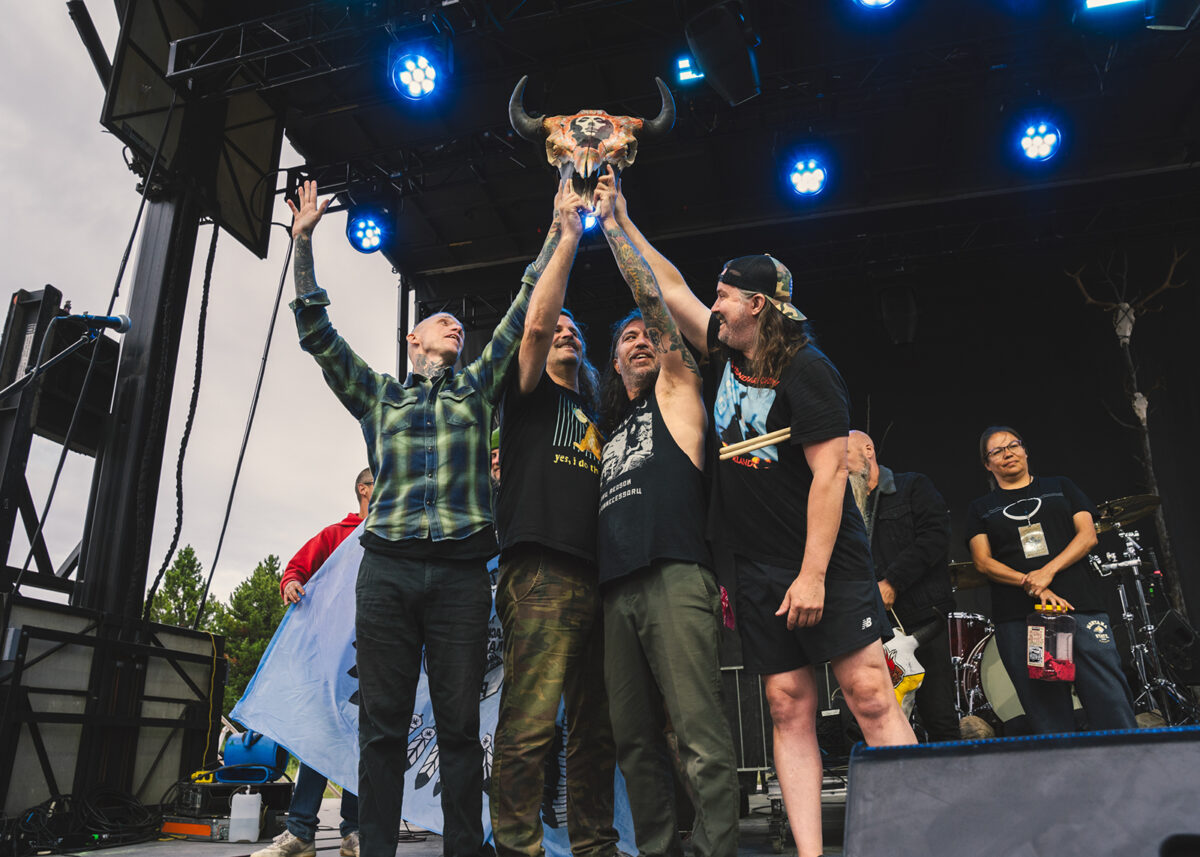
Wardruna sold over 500 t-shirts online and at the festival that Pollock, the Browning High School junior, designed for the band, the graphic artwork featuring a buffalo and two spears. All of the profits, $14,000, went to The Firekeeper Alliance.
Since the festival, Pollock’s been thinking more about what it would be like to continue with her art, something she had almost stopped before joining the Heavy Music Symposium.
“It helped me to get more out there,” Pollock said. “I’m going to try and make this into a full-time thing into the future, drawing stuff for bands and all that.”
The tribal council reached out shortly after the festival was over, confirming that the festival would be returning next year, hearing overwhelmingly “good views and good talks” from the community.
As the community still rides a high, The Firekeeper Alliance members look on to the next plans — hosting trainings for local counselors, groups for survivors of suicide and loss, and the next Heavy Music Symposium.
“I can only say, we’ve just lit the flame,” Hall said.
Those interested in learning more about The Firekeeper Alliance and their mission can attend a public fundraiser at Bonsai Brewing on Oct. 18 or check out the organization’s website at firekeeperalliance.org.
If you or someone you know is going through a difficult time or having thoughts of suicide, please know that you can talk to someone. Making a connection can make all the difference. Get help 24/7 by calling or texting 988 to reach the Suicide and Crisis Lifeline. It’s free and confidential.
